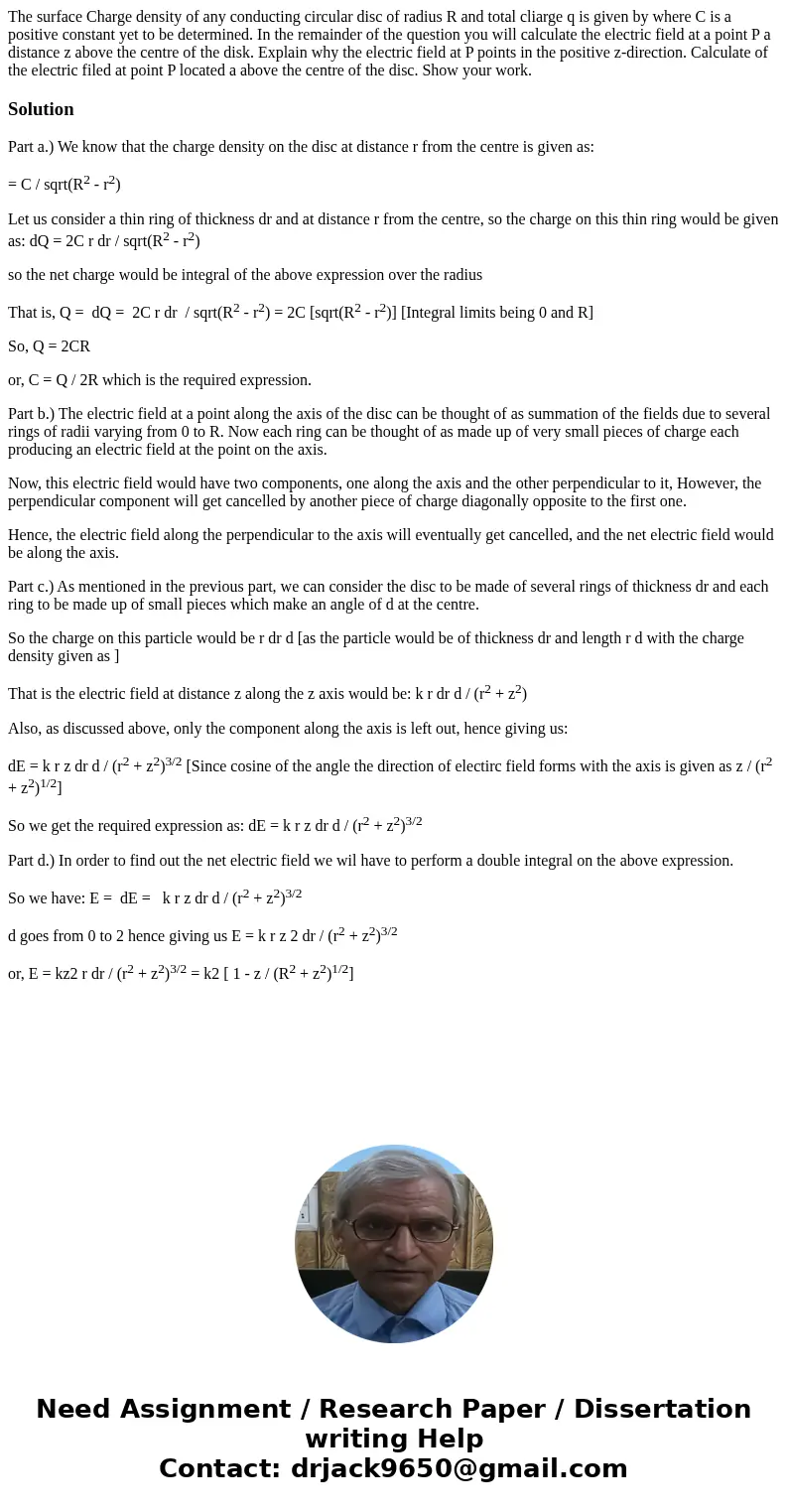The surface Charge density of any conducting circular disc o
Solution
Part a.) We know that the charge density on the disc at distance r from the centre is given as:
= C / sqrt(R2 - r2)
Let us consider a thin ring of thickness dr and at distance r from the centre, so the charge on this thin ring would be given as: dQ = 2C r dr / sqrt(R2 - r2)
so the net charge would be integral of the above expression over the radius
That is, Q = dQ = 2C r dr / sqrt(R2 - r2) = 2C [sqrt(R2 - r2)] [Integral limits being 0 and R]
So, Q = 2CR
or, C = Q / 2R which is the required expression.
Part b.) The electric field at a point along the axis of the disc can be thought of as summation of the fields due to several rings of radii varying from 0 to R. Now each ring can be thought of as made up of very small pieces of charge each producing an electric field at the point on the axis.
Now, this electric field would have two components, one along the axis and the other perpendicular to it, However, the perpendicular component will get cancelled by another piece of charge diagonally opposite to the first one.
Hence, the electric field along the perpendicular to the axis will eventually get cancelled, and the net electric field would be along the axis.
Part c.) As mentioned in the previous part, we can consider the disc to be made of several rings of thickness dr and each ring to be made up of small pieces which make an angle of d at the centre.
So the charge on this particle would be r dr d [as the particle would be of thickness dr and length r d with the charge density given as ]
That is the electric field at distance z along the z axis would be: k r dr d / (r2 + z2)
Also, as discussed above, only the component along the axis is left out, hence giving us:
dE = k r z dr d / (r2 + z2)3/2 [Since cosine of the angle the direction of electirc field forms with the axis is given as z / (r2 + z2)1/2]
So we get the required expression as: dE = k r z dr d / (r2 + z2)3/2
Part d.) In order to find out the net electric field we wil have to perform a double integral on the above expression.
So we have: E = dE = k r z dr d / (r2 + z2)3/2
d goes from 0 to 2 hence giving us E = k r z 2 dr / (r2 + z2)3/2
or, E = kz2 r dr / (r2 + z2)3/2 = k2 [ 1 - z / (R2 + z2)1/2]

 Homework Sourse
Homework Sourse